Although I typically wait until May or June to start working on deciduous bonsai, there are a few jobs that I try to do sooner rather than later. One of these is removing unnecessary root sprouts.
Root sprouts, or root suckers, are shoots that emerge directly from the roots. As you can see from the photo below, they are often the most vigorous branches on the tree.
Root sprouts (left side) on a Japanese flowering quince
When root sprouts grow freely, fewer resources are available for the branches I’d like to develop. To encourage the tree to produce new growth on established branches, I remove root sprouts whenever they appear.
Root sprouts on the left side of the tree
After removing the root sprouts
After pruning the root sprouts, I’ll remove any flower buds to prevent fruit from forming.
Spent flowers
Removing the spent flowers
These simple maintenance tasks encourage the tree to produce new growth where I want it – on the existing trunk and branches. Here’s the tree after a few minutes of clean-up.
After removing the flowers and root sprouts
I’ll revisit these trees in another month or two to see if new root sprouts have developed. When the wired branches have produced new growth, I’ll look to do cutback and additional wiring.
Learn How to Identify the Next Step: Introducing the Bonsai Development Intensives
I’m kicking off an intensive program this spring with a three-day course scheduled for June 21-23 at my garden in Alameda, California. The program is designed to help you identify next steps for improving trees at all stages of development using bonsai from my collection.
We’ll cover techniques you can use on your own trees this time of year including cutback, wiring, defoliation, and decandling. Over the course of the intensive, you’ll have ample opportunity to work on a mix of conifers, broadleaf evergreens, and deciduous bonsai.
Click here to sign up or to learn more about the Bonsai Development Intensives.
Subscribe to Bonsai Tonight
New Posts Delivered Every Tuesday and Friday
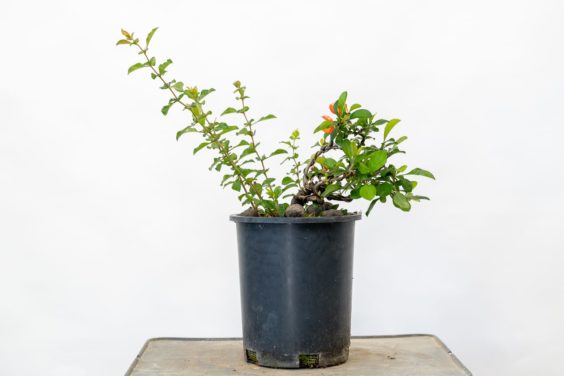
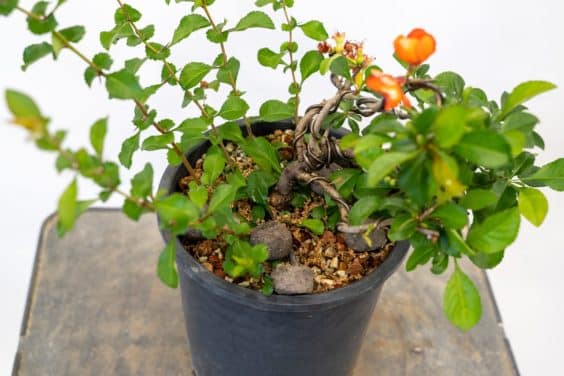
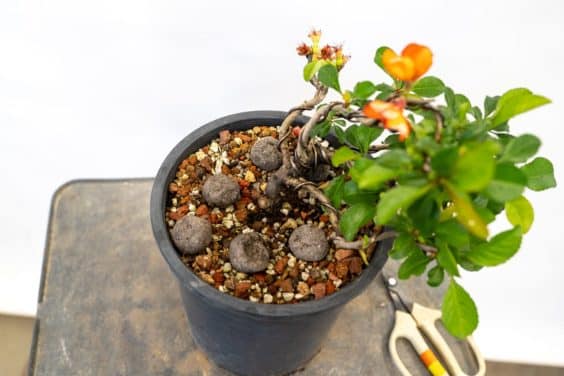
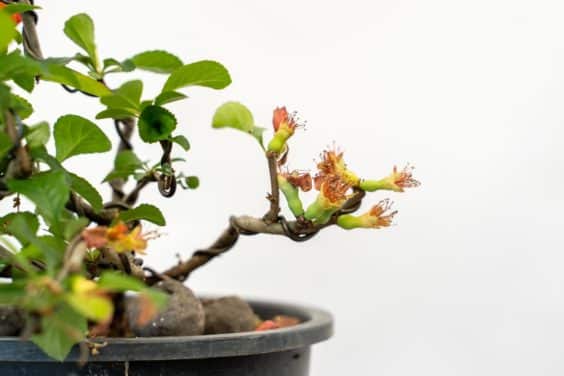
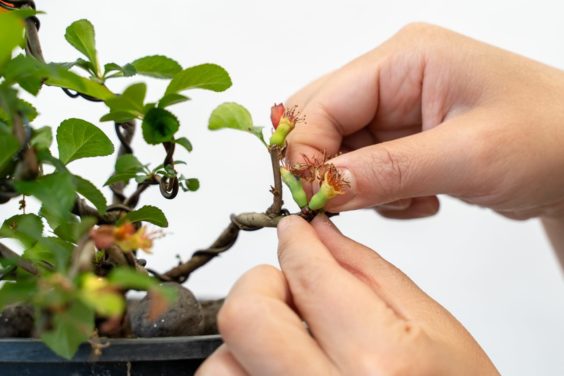
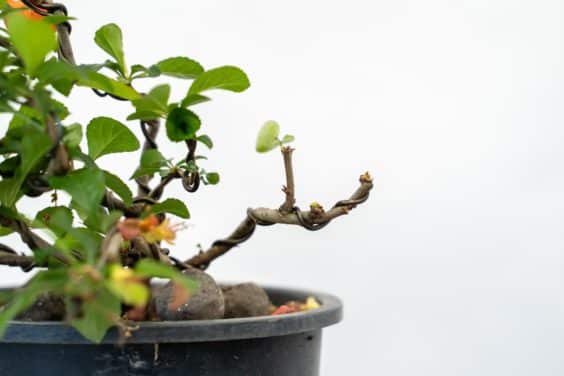
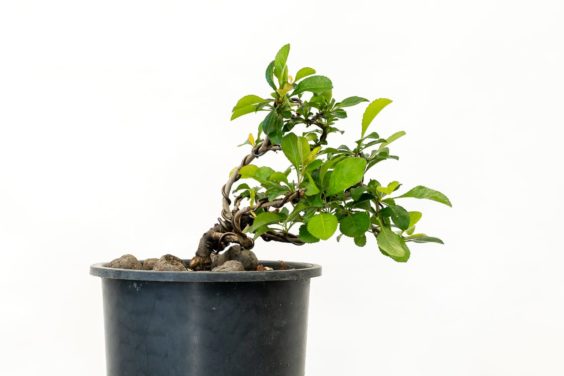
Jonathan says
Thank you for this informative blog post. Two questions:
1. If you see the root suckers just sprouting out of the soil, would you cut them back then? or wait till they’re more established like you showed in your pictures?
2. I see you have a lot of fertilizer in what looks like a small 5 gal or 3 gal nursery can. How do you know how many fertilizer cakes to put on each tree? Is it species specific? In this case, a J-Quince in development needs a lot of fertilizer?
Thx, jon
Jonas Dupuich says
Great questions Jon!
1. The sooner you remove the shoots you don’t need, the better. You can cut them when they are small.
2. The fertilizer is mild (4-6-2) and I want the trees to grow quickly so I tried using a lot. I will find out in a couple months if the amount is too much or just right.
Jonathan Jee says
Thank you.
shay cohen says
Hi Jonas,
I got a hold of a nice chojubai this year and very excited with working on it.
How will one fruit influence the energy levels? I left one for fun… 🙂
Thanks!
Shay
Jonas Dupuich says
Hi Shay – I don’t expect one fruit to cause a problem. Leaving one is a good way to see what the fruit looks like and what effect it has on the branch.
shay cohen says
Thanks!
Olivier says
Hi Jonas,
Thanks for sharing your knowledge. Would you remove root buds on freshly collected Chojubai ? Is it better to help the tree to recover or would those buds help creating roots ? Thanks ! Olivier.
Jonas Dupuich says
Hi Olivier – good question, I’ve wondered about that myself. Sometimes the only new shoots come from the soil which makes me think twice before removing them. If I know the tree will grow well after collecting or repotting, I’ll cut the root shoots. If I’m not sure the tree will live, I’ll let everything grow for a while and remove the root shoots later.